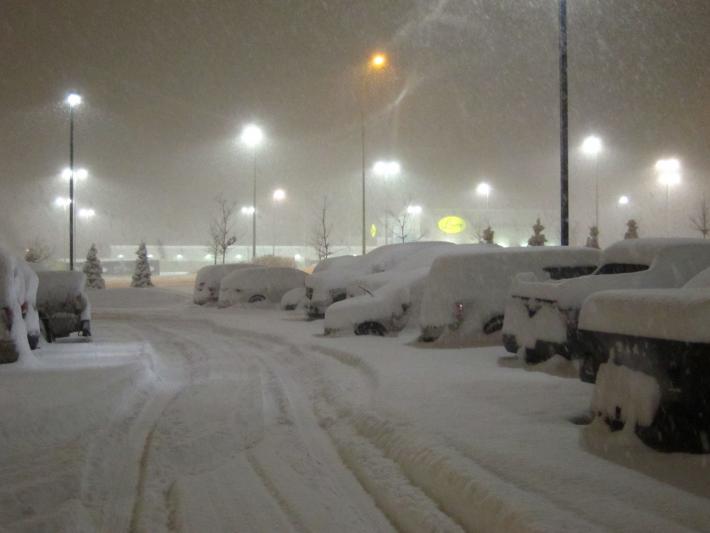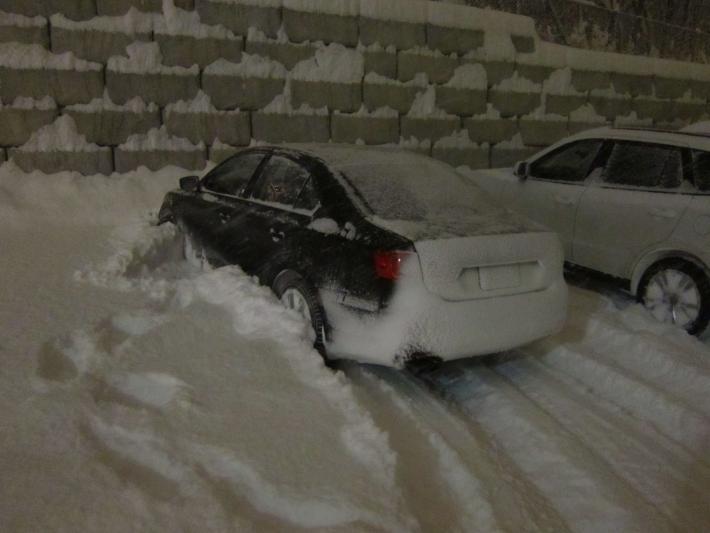Lake Effect Parking
Over the weekend, GCPEx had its first large lake effect snow, which put 2 inches down at the CARE site.
Chris Kidd, Operations Scientist for GCPEx this week, said in an email, "We were feeling rather poorly done-by at CARE due to the lack of snow there. However, we cheered up as we got back to Barrie [12 miles up the road where the GCPEx team is staying]. About 12+ inches here!"
 Parking lot at the GCPEx team's hotel in Barrie, Ontario. They were very excited to be buried in a foot of snow.
Parking lot at the GCPEx team's hotel in Barrie, Ontario. They were very excited to be buried in a foot of snow.Credit: NASA / Chris Kidd
Lake effect snow forms when cold winds pick up moisture and energy as they pass over long stretches of warmer bodies of water. In this case, the cold wind passed over Lake Huron, and the water vapor from the lake collected into the clouds and froze into snow. The snow falls in bands, and with the wind strength directing where the most moisture gets picked up and then dumped, the amount of snowfall on the ground can vary quite a bit from place to place, even those as close as the CARE site and Barrie, Ont., where the official total snowfall was 16 inches.
The DC-8 and the Citation aircraft flew over and through the storm, respectively. The GCPEx team is pretty excited about the data they've collected.
"That flight last night [Saturday] should be good from several perspectives- water/land contrasts across the band, profile microphysics etc," said Walt Petersen, the GCPEx Ground Validation Scientist. "The spectrum of rates and events we have collected thus far is starting to get pretty decent. If things keep going, even having a "dry", "warm" winter is not going to impact us from a data collection perspective."
The DC-8 also had special guests aboard who caught the storm on tape. NBC Nightly News will be running a story on GCPEx Monday night.


